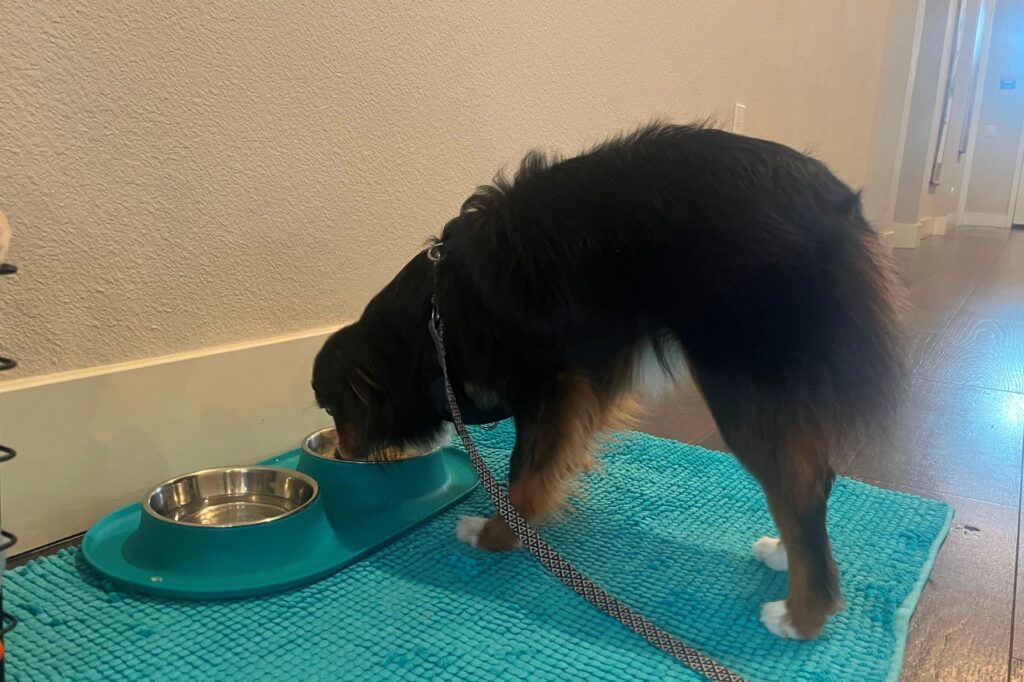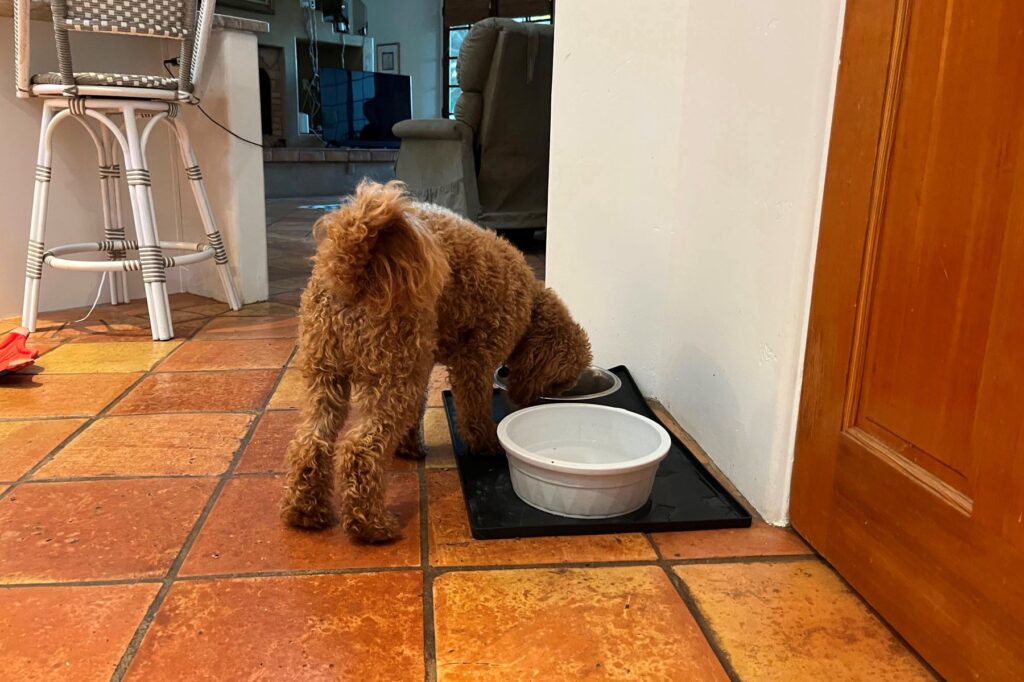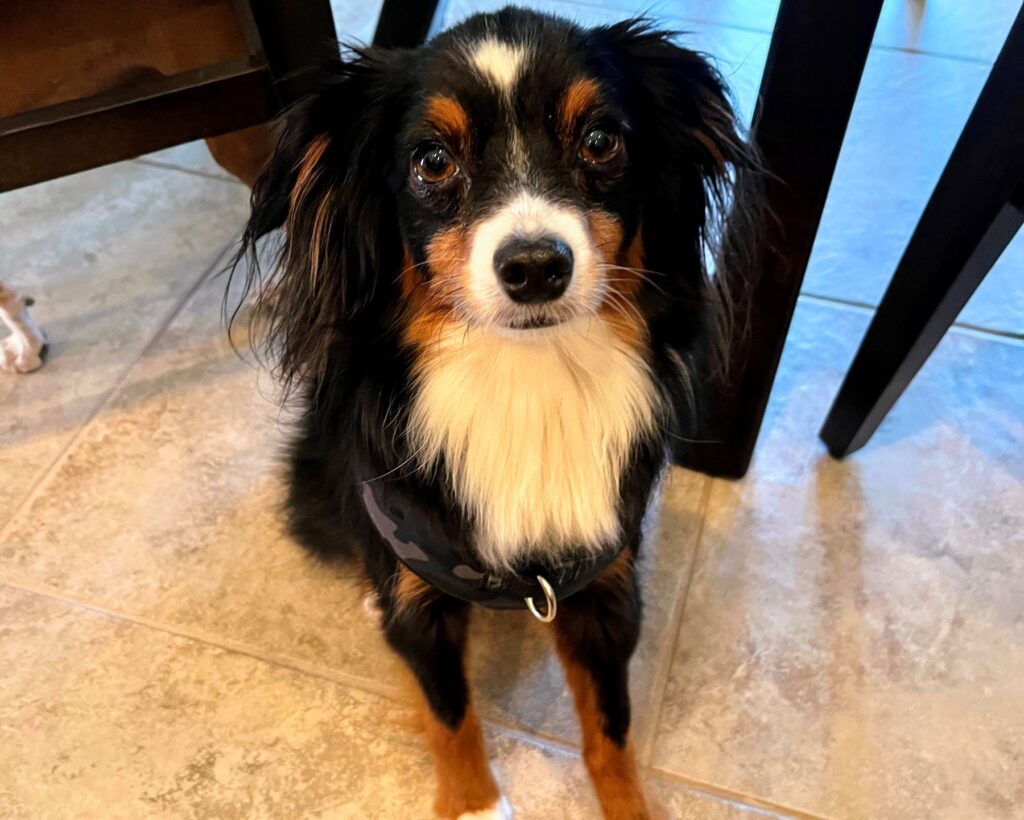Bringing home a new dog is such a joyful moment—but it also comes with lots of decisions, especially when it comes to feeding. As a new pet parent, you might be wondering if free feeding is a good way to start. It may seem like an easy and stress-free option, but is it really the healthiest choice for your pup? In this post, I’ll go over the pros and cons of free feeding dogs. I’ll also share why it might not be the best method in the long run and what feeding habits can help support your dog’s health and happiness.
How Does Free Feeding Work?
Free feeding dogs means keeping their food bowl full all day. Instead of giving meals at specific times, you leave dry food out so your dog can eat whenever they want. You simply refill the bowl when it gets low or empty.
This method is usually done with dry kibble because it doesn’t spoil quickly. There’s no need to measure out portions or stick to a schedule. Your dog can take small bites throughout the day or eat larger amounts at once, depending on their habits.
Free feeding is often used by busy dog owners who want an easier way to manage feeding. It gives dogs constant access to food, allowing them to eat at their own pace.
My Experience with Free Feeding

When I first became a dog owner, I was learning everything as I went. Like many new pet parents, I wanted to make things as easy as possible. Letting Shadow eat whenever he wanted seemed like a simple solution. I’d just keep his bowl full and refill it when it got low.
But over time, I noticed he wasn’t very interested in eating. He’d walk over, take a few bites, and wander off. Sometimes, he barely touched his food at all. It was hard to tell how much he was eating or when. I started to worry, especially since his eating habits felt so unpredictable.
Eventually, I switched to a scheduled feeding routine — two meals a day, with a few treats in between. Now, Shadow knows when it’s time to eat and gets excited for his meals. Having a set feeding schedule has made mealtime smoother, and it’s easier for me to manage his diet and health.
Scheduled Feeding Experiment
Recently, I had the chance to pet sit three dogs, and the owner allowed me to try scheduled feeding instead of their usual free feeding routine. The first day was challenging because the dogs refused to eat their food, sniffing around for treats instead. It reminded me of kids who snack all day and then refuse to eat their meals—dogs are no different!
I decided to stick to the schedule and didn’t give in to their demands for treats. They ended up skipping their meal that day and went hungry, but by the second day, something amazing happened. The dogs finally ate their food and even licked their bowls clean!
This experience showed me how important a scheduled feeding routine is. Unlike free feeding, which can lead to irregular habits, the schedule helped the dogs adjust quickly. Mealtime became easier, and I no longer had to chase them around or wait endlessly for them to eat. Sticking to scheduled feeding created a healthier routine for the dogs and made my job as a pet sitter much simpler.
Pros and Cons of Free Feeding Dogs
If you’re thinking about free feeding your dog, it’s important to understand both the benefits and the downsides. Like anything, this feeding style comes with its own set of pros and cons. Here’s what I learned through experience and research.

Pros of Free Feeding
1. Convenient for Busy Schedules
One of the main reasons people try free feeding their dog is because it’s easy. You don’t have to stick to a schedule or worry about getting home at a certain time to feed your dog. You just fill the bowl, and your dog eats when they want.
2. Good for Dogs Who Self-Regulate
Some dogs are really good at eating only when they’re hungry. They won’t overeat and seem to know how much food they need. For these dogs, free feeding might work just fine—especially if they’re calm and not food-driven.
3. Less Pressure Around Mealtime
With food always available, your dog may feel more relaxed around mealtime and less rushed or anxious about eating. This free feeding approach can help create a calm atmosphere. It’s especially helpful in multi-pet households where competition for food might cause tension or stress.
Cons of Free Feeding

1. Overeating and Weight Gain
Not all dogs stop eating when they’re full—in fact, from my experience, that’s pretty rare. Most dogs tend to snack out of boredom or just because the food is there. Over time, this habit can lead to overeating and unwanted weight gain.
With free feeding, it becomes much harder to control portion sizes, which increases the risk of obesity and related health issues in the long run.
2. Hard to Track Eating Habits
If your dog eats less, it could signal illness. Free feeding your dog makes it harder to notice changes in their eating habits, delaying potential health concerns. On the other hand, scheduled feeding helps track food intake and spot issues early.
3. Not Ideal for Multi-Pet Homes
In multi-pet homes, free feeding can lead to food competition, with some dogs overeating and others not getting enough. Scheduled feeding with separate bowls helps ensure each pet eats the right amount.
4. House Training Issues
Scheduled meals make it easier to predict bathroom breaks, helping with potty training. Free feeding also creates unpredictable eating times, making house training more difficult and leading to more accidents.
5. Messier and Less Hygienic
Food that sits out all day can become stale, attract bugs, or even grow mold—especially in warm or humid climates. Free feeding dogs this way isn’t the most hygienic option and can affect your dog’s appetite or digestion if the food goes bad.
Choosing the Right Feeding Method
Every dog is different, and finding the right feeding method takes time and patience. While free feeding may seem convenient at first, it often creates more challenges than solutions. A consistent mealtime routine not only supports better digestion but also strengthens the bond between you and your dog.
By choosing a more mindful approach to feeding, you’ll have better control over your dog’s health, weight, and daily habits. In the end, what matters most is creating a routine that helps your furry friend thrive.














